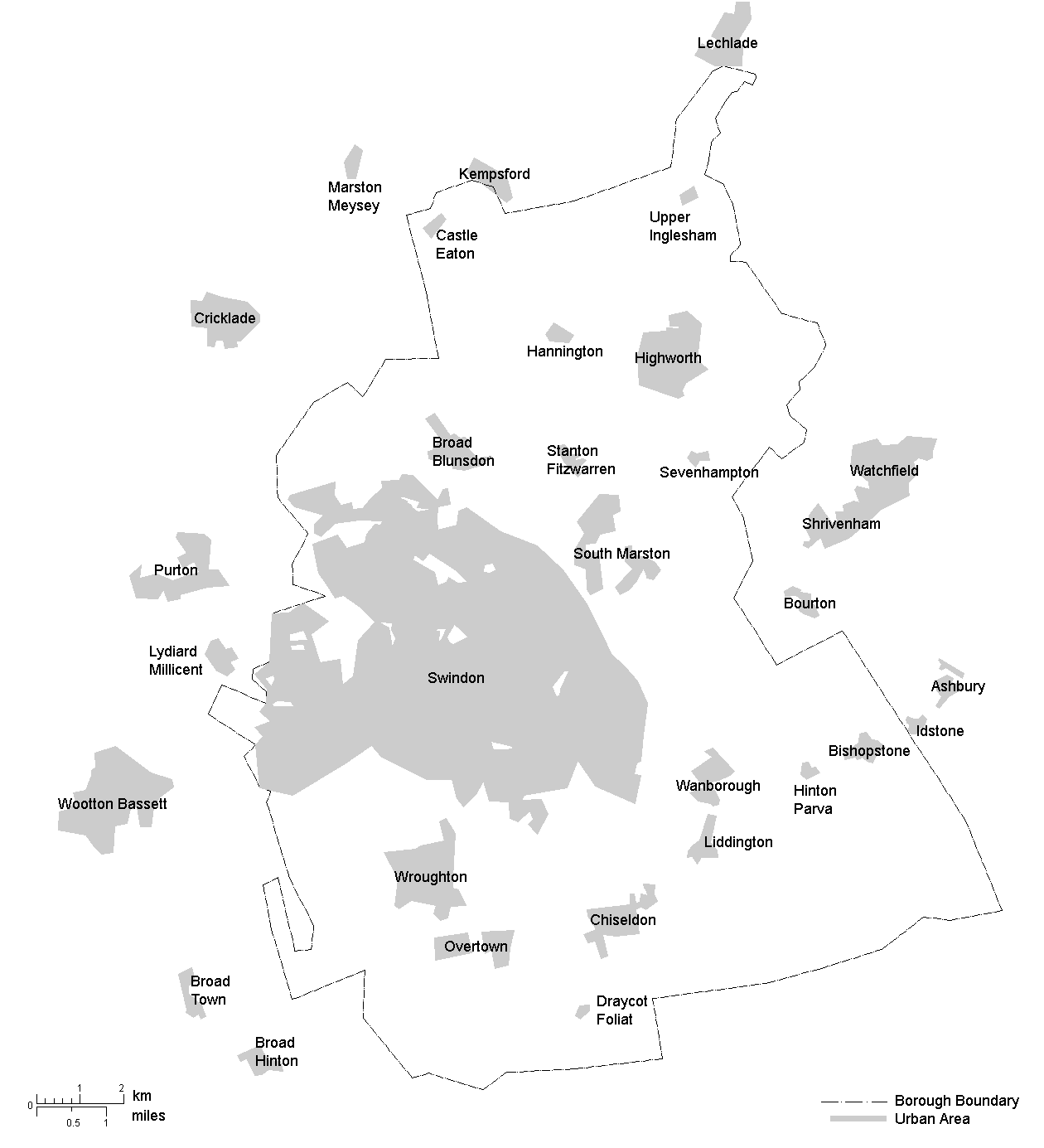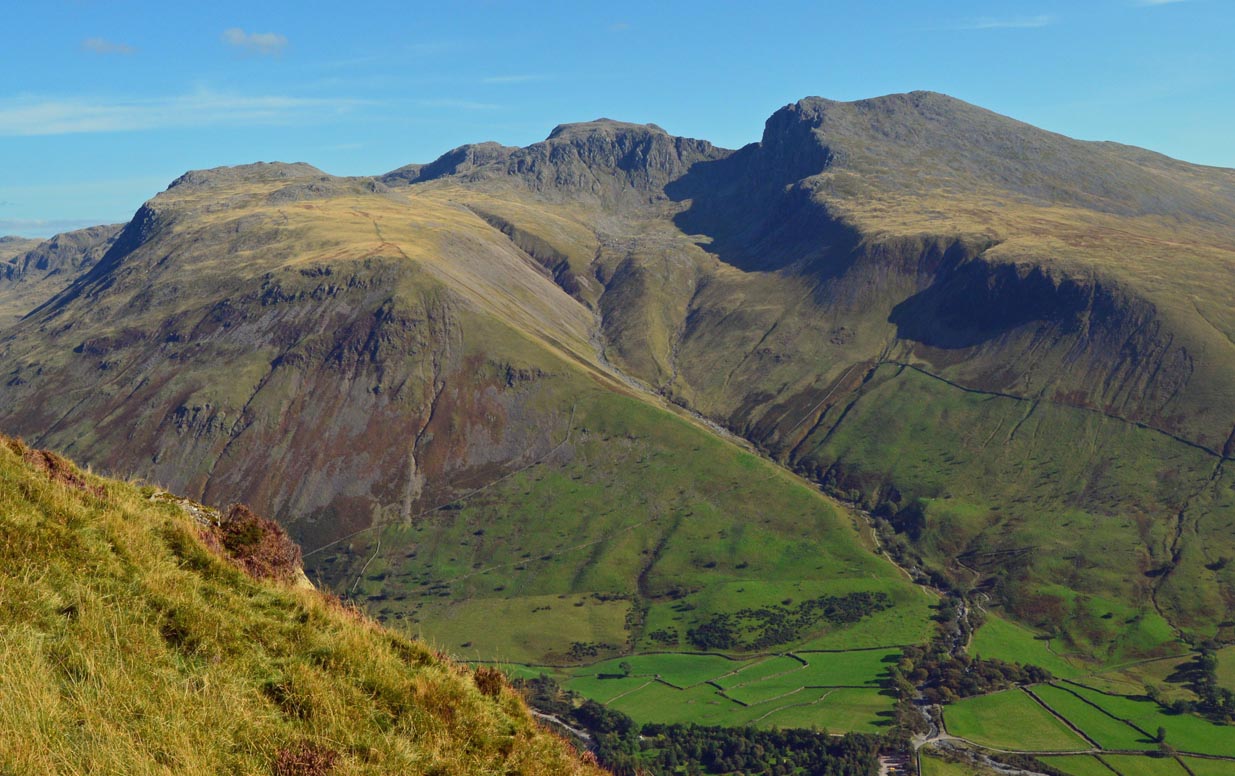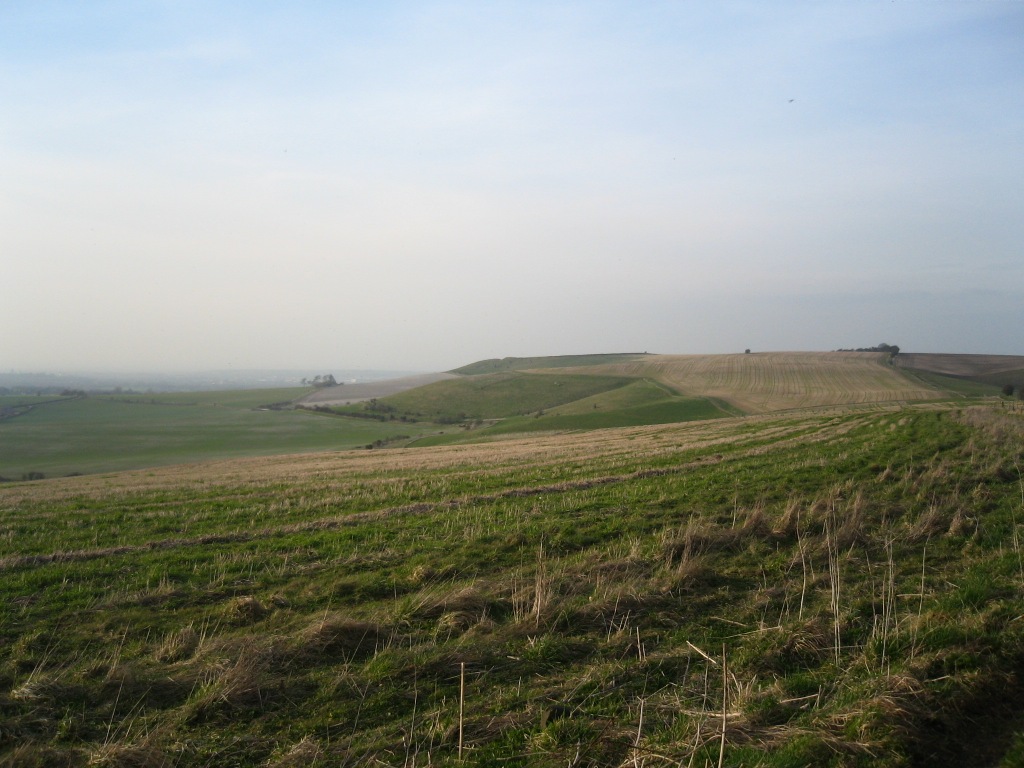|
Charlbury Hill, Wiltshire
Charlbury Hill is a hill near the villages of Hinton Parva and Bishopstone in the Borough of Swindon, England. Historically within Wiltshire, the hill lies just north of The Ridgeway. The summit is 253m (830ft) above sea level with a prominence of 64 metres (210 feet). The hill is classified as a TuMP (hill of 30m or greater prominence) on the Database of British and Irish Hills. There is an Ordnance Survey (OS) triangulation pillar (TP1392 Charlbury Hill) located 6m away from the highest point. The top of the hill is open access land with a permissive path from The Ridgeway. Name Andrews and Dury’s ''A Topographical Map of Wiltshire'' (1773) gives the name as Shelbarrow Hill and later maps give the name Shalborough Hill. It has also been called Skelbarrow Hill and has been spelt Charbury Hill. The OS first edition one-inch-to-the-mile map (1829–1830) gives the current name and spelling of Charlbury Hill which has been used since, including the current OS 1:25k Explore ... [...More Info...] [...Related Items...] OR: [Wikipedia] [Google] [Baidu] |
Hinton Parva, Wiltshire
Hinton Parva, also known as Little Hinton, is a village in the Borough of Swindon in Wiltshire, England. It lies about from the eastern edge of the Swindon built-up area, and is separated from the town by farmland and the village of Wanborough, Wiltshire, Wanborough. The village has a Grade I listed church which has Norman origins. Hinton Parva was a separate civil parish until 1934, and is now in the parish of Bishopstone, Swindon, Bishopstone. Geography The parish is crossed from east to west by the Icknield Way, an ancient trackway; the minor road from Wanborough to Bishopstone follows a similar route. For much of the 20th century the road was designated as part of the B4507, but this section – from the junction with the A419 road, A419 in the west beyond Wanborough, to Ashbury, Oxfordshire, Ashbury in the east – is now unclassified. Hinton village is on the north side of the road, down a gentle slope. About 500m west, on a lane which loops north from the road, are hou ... [...More Info...] [...Related Items...] OR: [Wikipedia] [Google] [Baidu] |
Bishopstone, Swindon
Bishopstone is a village and Civil parishes in England, civil parish in the Borough of Swindon, England, about east of Swindon, and on the county border with Oxfordshire. Since 1934 the parish has included the village of Hinton Parva, Wiltshire, Hinton Parva. Both Bishopstone and Hinton Parva have Grade I listed churches. Bishopstone lies on the north slope of the Lambourn Downs, overlooking the Vale of White Horse. It is between Wanborough, Wiltshire, Wanborough and Ashbury, Oxfordshire, Ashbury on the historic Icknield Way. Geography Bishopstone lies at the western end of the Vale of White Horse. The parish was on the county boundary with Berkshire until 1974, when the Vale was transferred from Berkshire to Oxfordshire. The village retains the former millpond, and is characterised by ancient lanes which are narrow and winding. The northern part of the parish is drained to the north-west by streams which join the River Cole, Wiltshire, River Cole, which forms part of the no ... [...More Info...] [...Related Items...] OR: [Wikipedia] [Google] [Baidu] |
Borough Of Swindon
The Borough of Swindon is a unitary authority area with borough status in Wiltshire, England. Centred on Swindon, it is the most north-easterly district of South West England. History The first borough of Swindon was a municipal borough, created in 1900 as a merger of the two urban districts of Old Swindon and New Swindon. In 1974 the borough of Thamesdown was created under the Local Government Act 1972. Thamesdown covered the areas of the municipal borough of Swindon and the neighbouring Highworth Rural District (which had been created in 1894), which were both abolished at the same time. Thamesdown was a lower-tier non-metropolitan district, with Wiltshire County Council being the higher-tier authority for the area. Thamesdown was given borough status from its creation, allowing the chair of the council to take the title of mayor. On 1 April 1997 Thamesdown was made a unitary authority, making it administratively independent from Wiltshire County Council. In June 199 ... [...More Info...] [...Related Items...] OR: [Wikipedia] [Google] [Baidu] |
The Ridgeway
The Ridgeway is a ridgeway or ancient trackway described as Britain's oldest road. The section clearly identified as an ancient trackway extends from Wiltshire along the chalk ridge of the Berkshire Downs to the River Thames at the Goring Gap, part of the Icknield Way which ran, not always on the ridge, from Salisbury Plain to East Anglia. The route was adapted and extended as a National Trail, created in 1972. The Ridgeway National Trail follows the ancient Ridgeway from Overton Hill, near Avebury, to Streatley, then follows footpaths and parts of the ancient Icknield Way through the Chiltern Hills to Ivinghoe Beacon in Buckinghamshire. The National Trail is long. History For at least 5,000 years travellers have used the Ridgeway. The Ridgeway provided a reliable trading route to the Dorset coast and to the Wash in Norfolk. The high dry ground made travel easy and provided a measure of protection by giving traders a commanding view, warning against potential attac ... [...More Info...] [...Related Items...] OR: [Wikipedia] [Google] [Baidu] |
TuMP
The mountains and hills of the British Isles are categorised into various lists based on different combinations of elevation, prominence, and other criteria such as isolation. These lists are used for peak bagging, whereby hillwalkers attempt to reach all the summits on a given list, the oldest being the 282 Munros in Scotland, created in 1891. A height above 2,000 ft, or more latterly 610 m, is considered necessary to be classified as a mountain – as opposed to a hill – in the British Isles. With the exception of Munros, all the lists require a prominence above . A prominence of between (e.g. some Nuttalls and Vandeleur-Lynams), does not meet the International Climbing and Mountaineering Federation (UIAA) definition of an "independent peak", which is a threshold over . Most lists consider a prominence between as a "top" (e.g. many Hewitts and Simms). Marilyns, meanwhile, have a prominence above , with no additional height threshold. They range from small hills to ... [...More Info...] [...Related Items...] OR: [Wikipedia] [Google] [Baidu] |
Ordnance Survey
The Ordnance Survey (OS) is the national mapping agency for Great Britain. The agency's name indicates its original military purpose (see Artillery, ordnance and surveying), which was to map Scotland in the wake of the Jacobite rising of 1745. There was also a more general and nationwide need in light of the potential threat of invasion during the Napoleonic Wars. Since 1 April 2015, the Ordnance Survey has operated as Ordnance Survey Ltd, a state-owned enterprise, government-owned company, 100% in public ownership. The Ordnance Survey Board remains accountable to the Secretary of State for Science, Innovation and Technology. It was also a member of the Public Data Group. Paper maps represent only 5% of the company's annual revenue. It produces digital map data, online route planning and sharing services and mobile apps, plus many other location-based products for business, government and consumers. Ordnance Survey mapping is usually classified as either "Scale (map), lar ... [...More Info...] [...Related Items...] OR: [Wikipedia] [Google] [Baidu] |
Triangulation Station
A triangulation station, also known as a trigonometrical point, and sometimes informally as a trig, is a fixed surveying station, used in geodetic surveying and other surveying projects in its vicinity. The station is usually set up by a mapping organisation with known coordinates and elevation published. Numerous stations are installed on summits for purposes of visibility and prominence. A graven metal plate on the top of a pillar may provide a mounting point for a theodolite or reflector, often using some form of kinematic coupling to ensure reproducible positioning. Use Trigonometrical stations form networks of triangulation. Positions of land boundaries, roads, railways, bridges and other infrastructure can be accurately located by the network, a task essential to the construction of modern infrastructure. Apart from the known stations set up by government, some temporary trigonometrical stations are set up near construction sites for monitoring the precision and progres ... [...More Info...] [...Related Items...] OR: [Wikipedia] [Google] [Baidu] |
Open Access Land
The freedom to roam, or everyone's right, every person's right or everyman's right, is the general public's right to access certain public or privately owned land, lakes, and rivers for recreation and exercise. The right is sometimes called the right of public access to the wilderness or the right to roam. In Austria, Belarus, Estonia, Finland, Iceland, Latvia, Lithuania, Norway, Scotland, Sweden, Switzerland and the Czech Republic, the freedom to roam takes the form of general public rights which are sometimes codified in law. The access is ancient in parts of Northern Europe and has been regarded as sufficiently fundamental that it was not formalised in law until modern times. However, the right usually does not include any substantial economic exploitation, such as hunting or logging, or disruptive activities, such as making fires and driving offroad vehicles. In countries without such general rights, there may be a network of rights of way, or some nature reserves with footp ... [...More Info...] [...Related Items...] OR: [Wikipedia] [Google] [Baidu] |
Permissive Path
In England and Wales, excluding the 12 Inner London boroughs and the City of London, the right of way is a legally protected right of the public to pass and re-pass on specific paths. Private rights of way or easements also exist. The law in England and Wales differs from Scots law in that rights of way exist only where they are so designated (or are able to be designated if not already), whereas in Scotland any route that meets certain conditions is defined as a right of way, and in addition, there is a general presumption of access to the countryside (the "right to roam"). Definitive maps Definitive maps of public rights of way have been compiled for all of England and Wales, as a result of the National Parks and Access to the Countryside Act 1949, except the 12 Inner London boroughs, which, along with the City of London, were not covered by the Act. Definitive maps exist for the Outer London boroughs. Local highways authorities (usually county councils or unitary ... [...More Info...] [...Related Items...] OR: [Wikipedia] [Google] [Baidu] |
Liddington Castle
Liddington Castle, locally called Liddington Camp, is a late Bronze Age and early Iron Age univallate hillfort in Liddington parish in the English county of Wiltshire, and a scheduled monument. Description The site is on a commanding high point close to the Ridgeway and covers an area of . Liddington Castle was one of the earliest hillforts in Britain, with first occupation dating to the 7th century BC. The earthworks consist of a relatively simple oval bank of timber and earth fronted by a ditch, with opposing causewayed entrances on the east and west sides. The western entrance was later blocked off and the eastern one may have been lined with sarsen stones. A palisade of wooden posts may have lined the top of the bank. During a later phase the bank and ditch were improved and a rampart of dumped chalk, excavated from the enlarged ditch, increased the height of the bank. Archaeology The site was disturbed by flint mining between 1896 and 1900. The archaeologist A. D. ... [...More Info...] [...Related Items...] OR: [Wikipedia] [Google] [Baidu] |
Archaeology
Archaeology or archeology is the study of human activity through the recovery and analysis of material culture. The archaeological record consists of Artifact (archaeology), artifacts, architecture, biofact (archaeology), biofacts or ecofacts, archaeological site, sites, and cultural landscapes. Archaeology can be considered both a social science and a branch of the humanities. It is usually considered an independent academic discipline, but may also be classified as part of anthropology (in North America – the four-field approach), history or geography. The discipline involves Survey (archaeology), surveying, Archaeological excavation, excavation, and eventually Post excavation, analysis of data collected, to learn more about the past. In broad scope, archaeology relies on cross-disciplinary research. Archaeologists study human prehistory and history, from the development of the first stone tools at Lomekwi in East Africa 3.3 million years ago up until recent decades. A ... [...More Info...] [...Related Items...] OR: [Wikipedia] [Google] [Baidu] |








